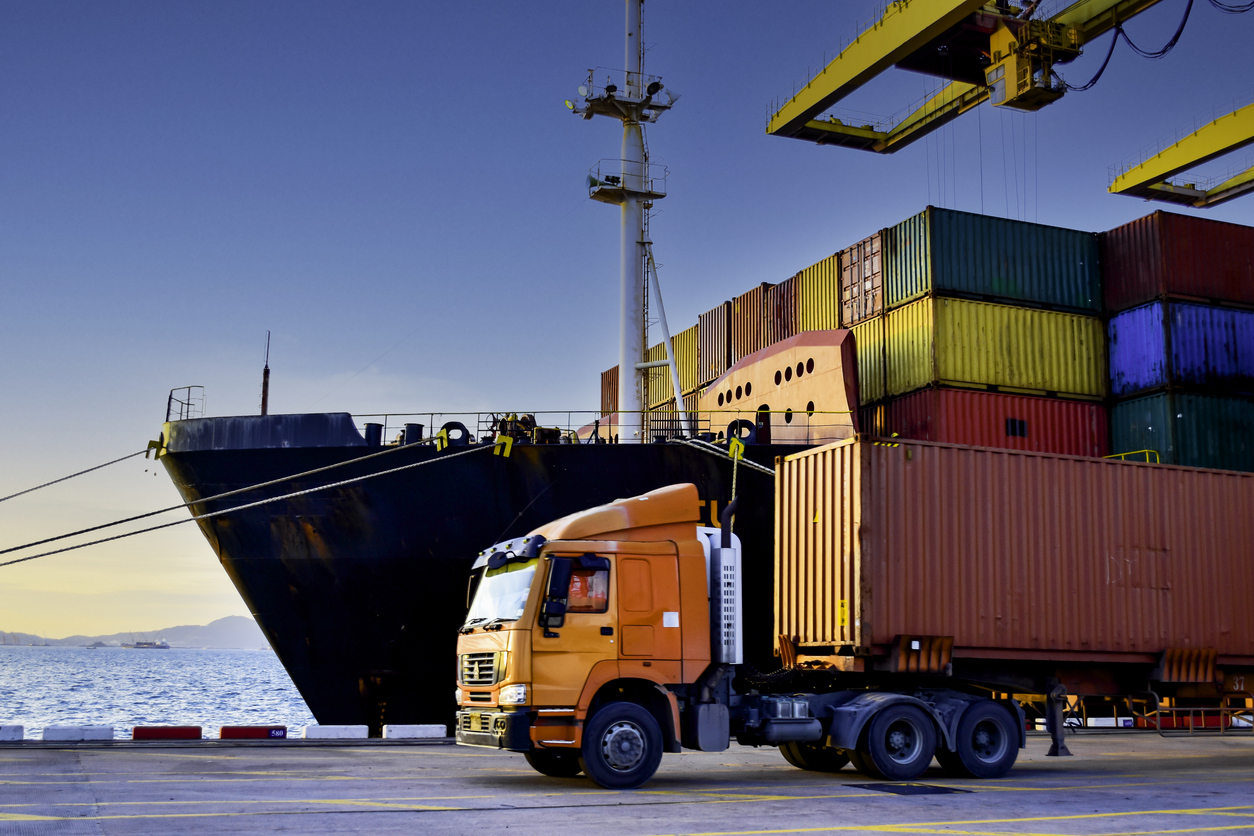Trucking logistics in 2025 is shaped by advancing technology, evolving regulations, and shifting market demands. Businesses must adapt to these changes to maintain efficient supply chains and control costs. Understanding how automation, data analytics, and sustainability initiatives impact trucking operations is crucial for staying competitive.
Leaders need insight into how emerging trends influence delivery speed, route optimization, and driver management. These factors directly affect operational reliability and customer satisfaction. Recognizing the role of digital platforms in real-time tracking and fleet management helps businesses make informed decisions.
The combination of new tech and regulatory pressure requires clear strategies to minimize disruptions and improve efficiency. Those who grasp these dynamics will better navigate the complexities of modern trucking logistics.
Fundamental Changes in Trucking Logistics for 2025
Trucking logistics in 2025 is shaped by specific industry pressures, notable technological shifts, and changes in customer expectations. These factors combine to redefine operations, cost structures, and service priorities across the sector.
Key Industry Drivers
Rising fuel costs and stricter emissions regulations are major forces affecting trucking logistics. Companies must optimize routes and adopt cleaner technologies to meet regulatory standards and reduce expenses.
Labor shortages continue to challenge the sector. A shrinking pool of qualified drivers pushes firms to invest in recruitment and retention, often offering higher wages and better working conditions.
Supply chain disruptions persist as a consequence of geopolitical tensions and changing trade policies. This unpredictability increases demand for flexible logistics strategies and enhanced risk management.
Technological Advancements
Automation has advanced with the broader use of autonomous truck features and AI-based fleet management systems. These reduce human error and lower operational costs while improving delivery accuracy.
Telematics and real-time data analytics provide detailed insights into vehicle performance, driver behavior, and route efficiency. This drives smarter decision-making and proactive maintenance.
Electric and alternative fuel vehicles are increasingly integrated into fleets. Their adoption is motivated by environmental compliance, lower lifecycle costs, and support from government incentives.
Evolving Market Demands
Customers now require more rapid and reliable delivery options, particularly for e-commerce shipments. Last-mile logistics have become more complex with tighter delivery windows and increased volume.
There is heightened demand for transparency and real-time shipment tracking. Businesses invest in digital platforms that allow customers to monitor progress and receive notifications instantly.
Sustainability is a growing priority. Buyers and partners prefer logistics providers that demonstrate measurable environmental responsibility, influencing contract awards and brand reputation.
Regulatory and Insurance Considerations
Trucking logistics in 2025 involves navigating intricate compliance demands alongside evolving insurance rules. Businesses must align operations with updated governmental standards while maintaining adequate coverage. Environmental legislation now plays a critical role in shaping regulatory frameworks and risk management.
Updated Compliance Standards
Federal and state authorities have increased emphasis on electronic logging devices (ELDs) and real-time data reporting to ensure driver hours and cargo safety are monitored continuously. The Federal Motor Carrier Safety Administration (FMCSA) now mandates automatic vehicle location (AVL) systems for commercial fleets exceeding a certain size.
New standards for autonomous and assisted-driving features require carriers to validate system performance and cybersecurity protections. Compliance audits have become more frequent, focusing on vehicle maintenance, driver training, and drug testing protocols. Non-compliance may result in substantial fines and operational suspensions.
Insurance Requirements
Insurance policies now demand broader risk coverage reflecting the growing use of advanced technologies in trucks. Liability limits have adjusted upward, particularly for fleets involved in interstate commerce, with minimum primary coverage reaching $2 million in most cases.
Carriers must also secure specialized coverage for cybersecurity risks related to connected vehicle systems. Excess or umbrella policies are increasingly standard to cover claims beyond primary limits. Insurers assess compliance history, safety records, and technology integration when determining premium rates.
Sustainability and Emissions Policies
New emissions regulations target heavy-duty diesel engines, with many states requiring carbon-neutral certification or equivalent offsets by 2027. The EPA’s Cleaner Trucks Initiative introduces strict greenhouse gas (GHG) limits and incentives for electric or hydrogen-powered vehicles.
Trucking companies must prepare to report emissions data regularly through state-run systems and may qualify for tax credits by adopting zero-emission fleets. Non-compliance can lead to fines and loss of operating permits. Sustainability audits are becoming part of standard regulatory reviews.
Operational Best Practices for Business Leaders
Leaders must implement precise strategies to enhance efficiency, mitigate risks, and build a skilled workforce. Focused investments in technology, process alignment, and staff training are essential to maintaining competitive advantage and operational resilience.
Digitalization of Fleet Management
Implementing real-time tracking systems enables continuous monitoring of vehicle locations, fuel usage, and maintenance needs. This data improves route planning, reduces idle times, and lowers operational costs.
Automated scheduling tools help optimize driver assignments and fleet deployment to match fluctuating demand patterns. Integrating telematics with predictive maintenance software addresses mechanical issues before failures occur, decreasing downtime.
Security protocols such as encryption and role-based access control protect fleet management systems from cyber threats. Digital dashboards provide leadership with actionable insights, supporting data-driven decisions and compliance with regulatory requirements.
Optimizing Supply Chain Integration
Seamless coordination between trucking operations and suppliers enhances delivery accuracy and timing. Establishing electronic data interchange (EDI) or API connections reduces manual data entry errors and accelerates information flow.
Cross-functional teams should focus on synchronizing inventory levels with transportation schedules, preventing bottlenecks and excess stock. Leveraging shared platforms for visibility improves collaboration across partners and speeds up exception handling.
Regularly reviewing freight consolidation opportunities lowers costs while reducing carbon emissions. Employing performance metrics such as on-time delivery rate and order accuracy supports continuous improvement in supply chain processes.
Risk Management Strategies
Proactive identification of operational risks—such as vehicle breakdowns, driver shortages, and weather disruptions—is critical. Creating contingency plans includes alternative routing options and backup driver pools.
Insurance coverage must be evaluated frequently to ensure it matches current fleet size and cargo values. Compliance audits should verify adherence to safety regulations and labor laws.
Investment in cybersecurity measures protects sensitive data and systems from ransomware and phishing attacks. Training drivers and staff on risk awareness strengthens organizational resilience against unexpected events.
Talent Acquisition and Training
Recruiting qualified drivers requires competitive compensation packages, clear career paths, and positive company culture. Utilizing digital recruitment tools streamlines the hiring process and widens candidate reach.
Ongoing training programs focused on safety, fuel efficiency, and technology use improve driver performance and retention. Simulated driving scenarios and e-learning modules offer scalable options for skill enhancement.
Leadership should implement mentorship initiatives pairing experienced drivers with new hires to transfer practical knowledge. Monitoring employee satisfaction and providing professional development opportunities reduces turnover rates.
Future Outlook and Strategic Opportunities
The trucking logistics sector in 2025 is shaped by rapid innovation, growing partnerships, and shifting capital flows. Key areas driving change include technology advancements, ecosystem collaboration, and financial strategies targeting efficiency and sustainability.
Emerging Technologies to Watch
Autonomous trucks continue to advance, with several fleets conducting pilot programs to test safety and operational benefits. Electric trucks gain traction as companies prioritize lower emissions, benefiting from expanding charging infrastructure.
Data analytics and AI-powered route optimization help reduce fuel consumption and improve delivery times. Blockchain is increasingly applied to secure transactions and track shipments, enhancing transparency.
Companies adopting these technologies gain competitive advantages by cutting costs and meeting stricter regulatory standards. Early investment in integration tools enables smoother transitions as innovation accelerates.
Collaboration Across the Logistics Ecosystem
Collaboration between shippers, carriers, and technology providers grows essential to meet complex supply chain demands. Shared platforms enable real-time data exchange that improves load matching and reduces empty miles.
Public-private partnerships support infrastructure upgrades and regulatory clarity. Third-party logistics providers (3PLs) expand their roles to include end-to-end supply chain services, aligning multiple stakeholders on efficiency and sustainability goals.
A cooperative approach also mitigates driver shortages through shared resources and coordinated labor strategies. Logistics alliances help distribute risk and investment in emerging tech, balancing costs across partners.
Investment Trends in Trucking
Investment in trucking focuses heavily on fleet modernization and digital tools. Venture capital gravitates toward startups developing autonomous vehicle systems, telematics, and electric powertrains.
Sustainability mandates increase funding for green initiatives, including zero-emission trucks and renewable energy integration. Infrastructure investments prioritize charging stations and smart highway technologies.
Corporate buyers increasingly favor long-term leases over outright purchases to maintain financial flexibility in a rapidly evolving landscape. Public markets show growing appetite for logistics companies demonstrating scalable tech adoption and sustainable practices.













